Tuesday, August 30, 2022. We had been warned by Memo that the temperatures were going to drop today, but I hadn’t expected a drop in the temperature of my shower. It was an on-demand shower, and while I demanded hot water, none came out. I took the most alarming, heart pounding shower I have had in quite some time, followed by intense shivering, all while Mark snickered from the other room. At breakfast, I learned the primary generator had pooped out and the back-up generator was not capable of supplying enough electricity for all the heat pumps to provide hot showers. Such is life in the jungle.
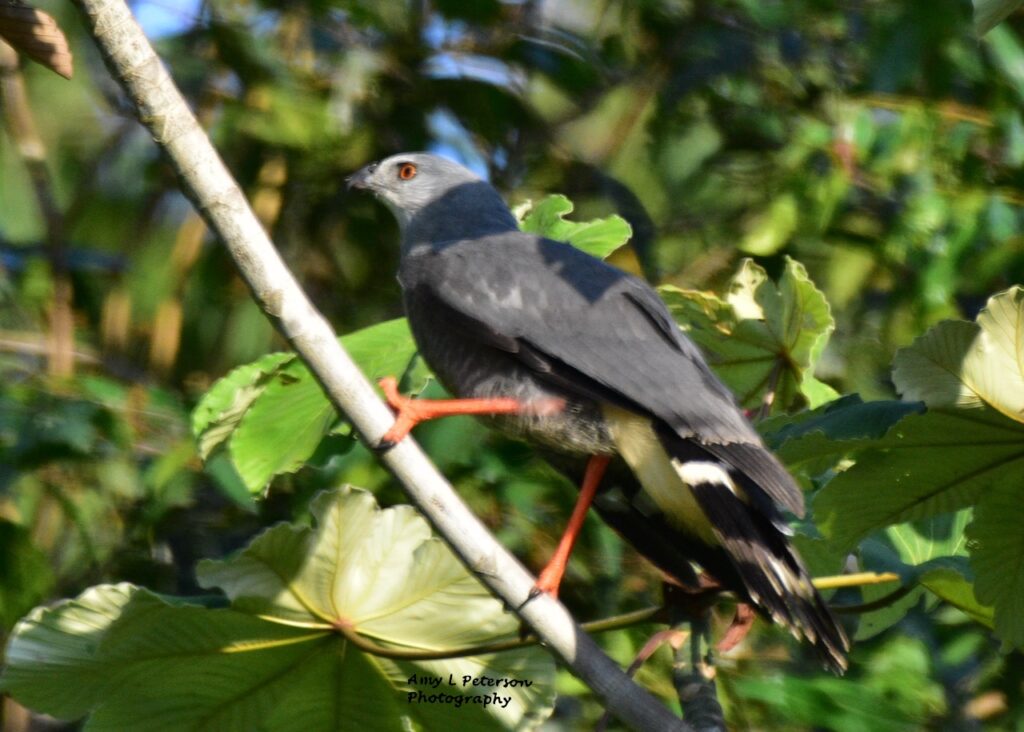

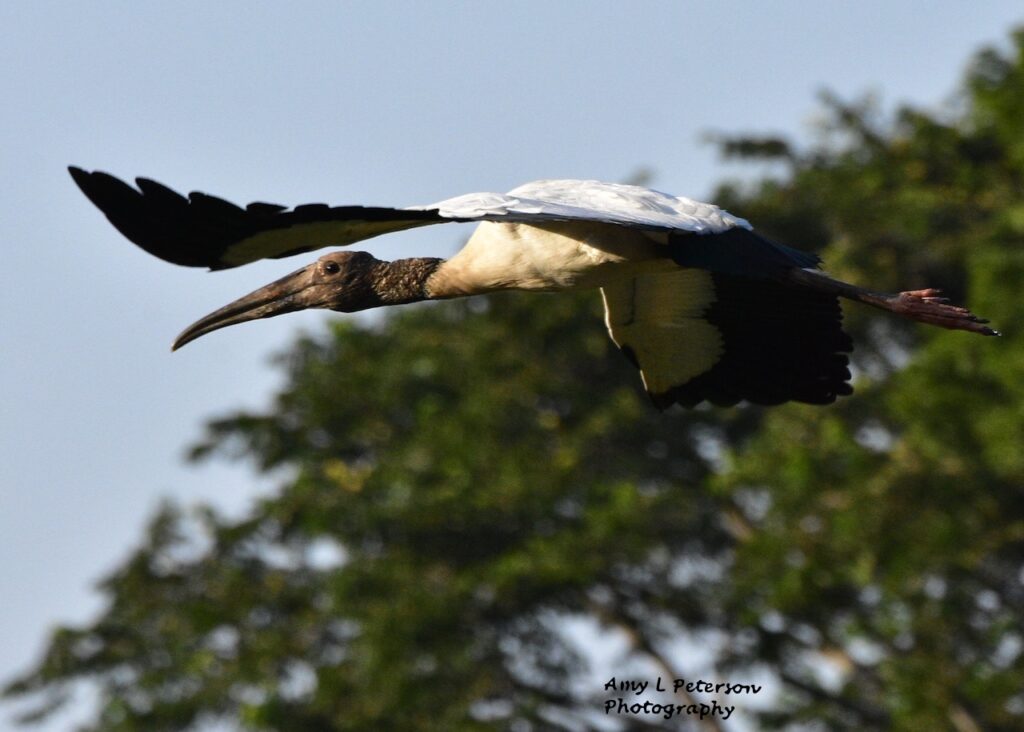
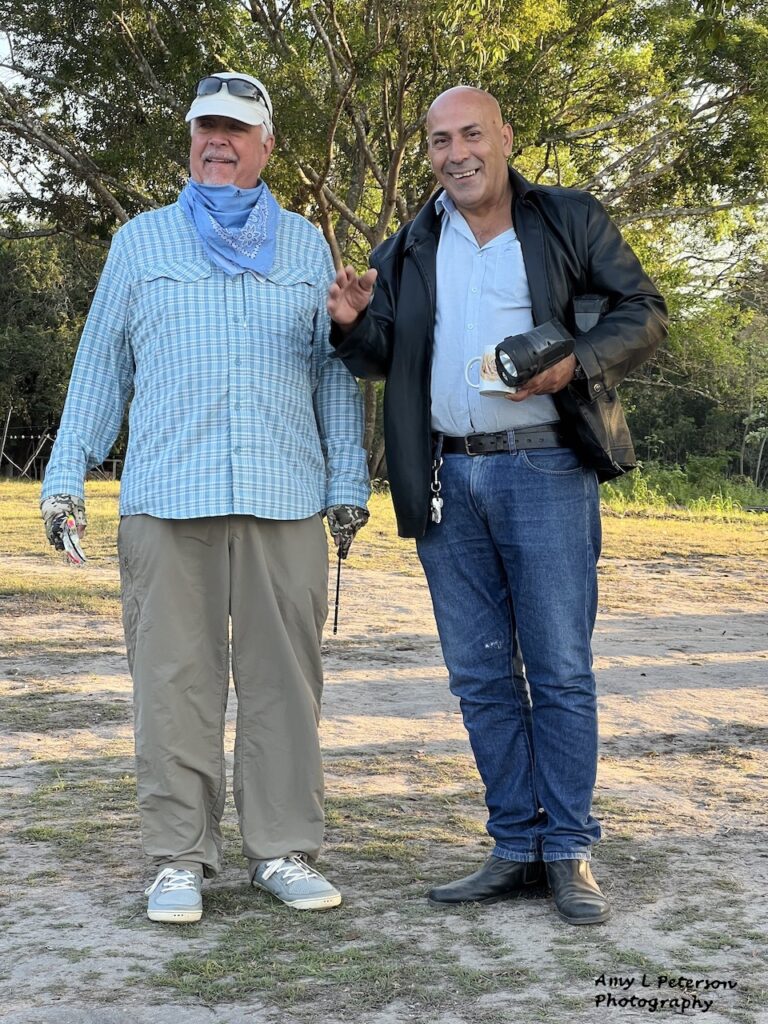
Breakfast was the same as every other day–toast with jam, bacon and eggs, fresh pineapple and mango, and rolled up pieces of ham and cheese. As we walked to the river, though, Memo appeared with a pancake in hand. He asked if we’d gotten any pancakes and we said pancakes hadn’t been offered. He shrugged and said that perhaps they’ll make some for us tomorrow. Too funny.
I liked Memo and didn’t envy him his job–trying to make fishermen happy, especially ones that had spent quite a bit of money just to be at his lovely lodge. His staff seemed to appreciate him and he his staff. And I am always grateful for happy staff, especially when the staff are guides who carry knives and take me fishing at night in the jungle.
On this particular morning, an extra layer or two was needed for the boat road. The guides wore down vests as we buzzed down the river and whipped around bends to wherever Raul thought would be the place for vampire fish.
Memo had asked Raul to focus on vampire fish, and while we did go to a new area where Raul said he could see vampires in the water, we flogged the water for several hours without success. Raul said the vampire fish were not hungry.
At this point, I was beginning to cast doubt that I was going to get a vampire fish. The only thing buoying me was remembering that on our trip to catch marlin many years ago in Mexico, my marlin came on the last day, with two hours to go before we had to start heading home.




Mid-morning and without a single fish caught, we stopped on a sand bar for a break. I’d become a fan of sandbars, because we always saw something interesting. On this one, Mark saw this skinny fish in a damp spot on the sand about ten feet from shore. It wiggled, so Mark picked it up and gently put it in the river. Since I’d seen a black-collared hawk with a skinny fish like this in its beak, I found it plausible that this tiny fish had been dropped on shore from the air, courtesy of a distracted bird. We laughed that at least we’d finally caught a fish.
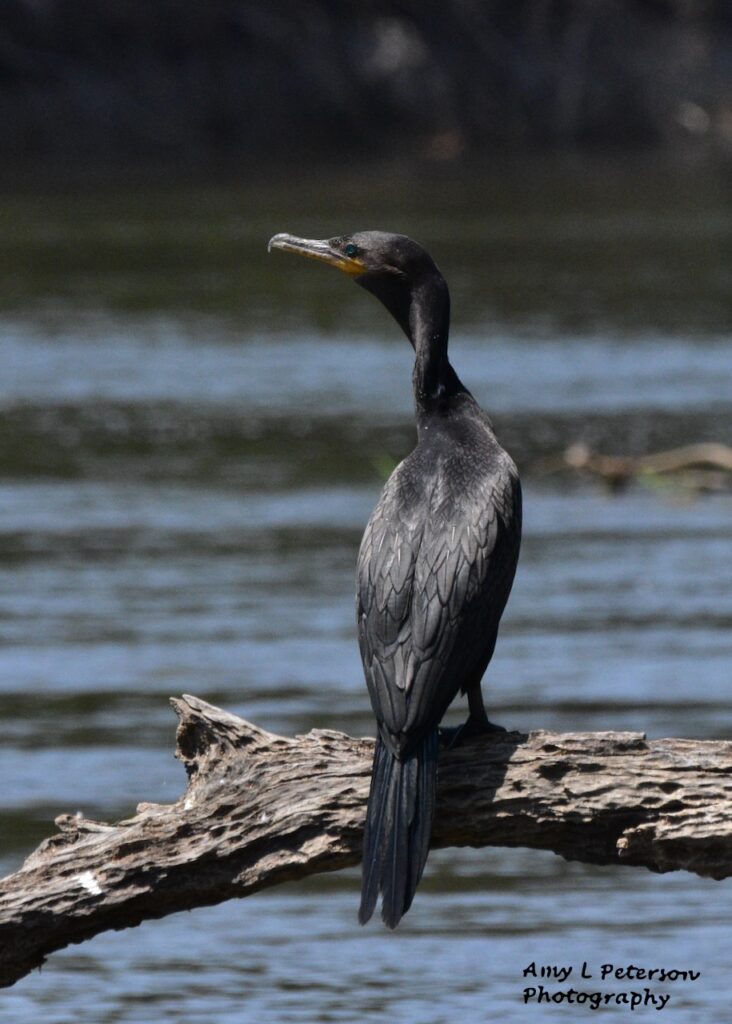
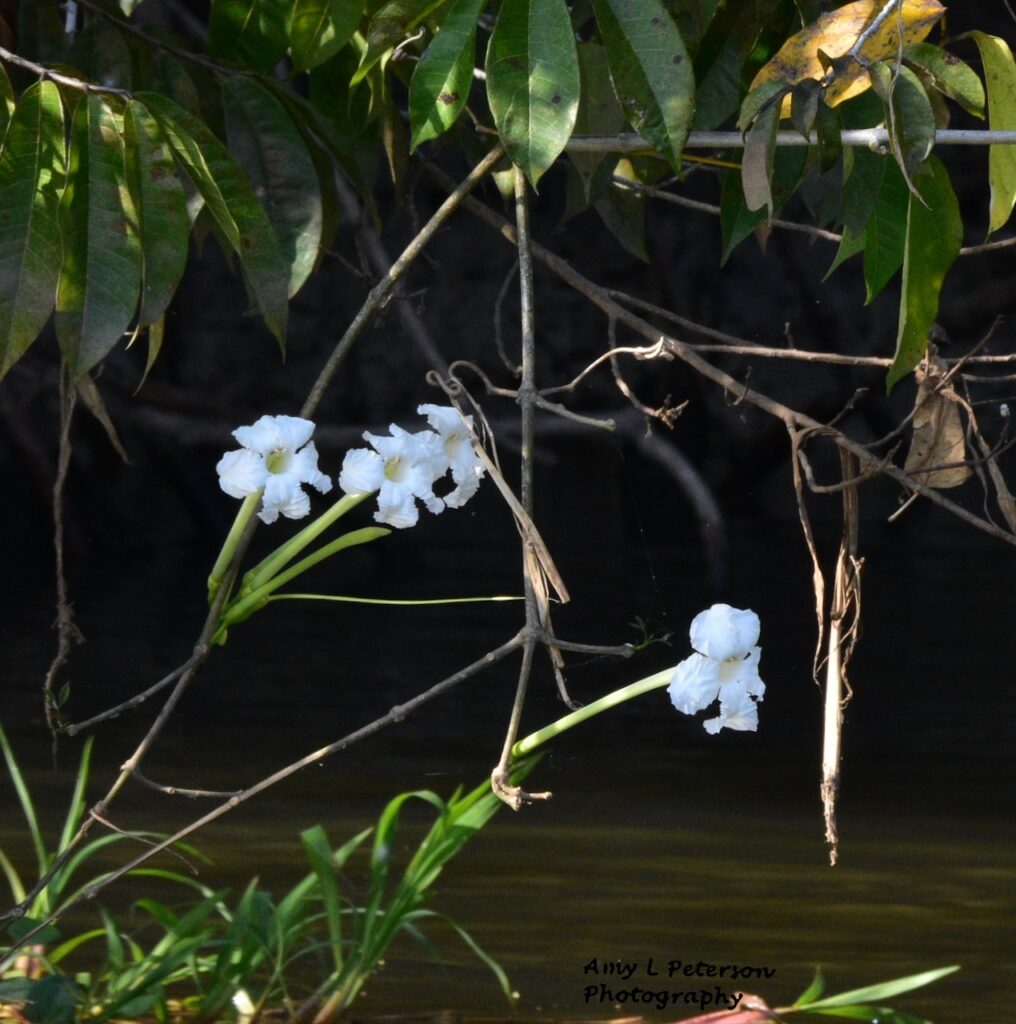
Fishing was slow enough to capture an orchid overhanging the river and a neotropical cormorant on a log.
This small caiman hung out nearby, occasionally following a small lure to the boat. We got pretty good at reeling just fast enough for our lure to stay ahead of the caiman.
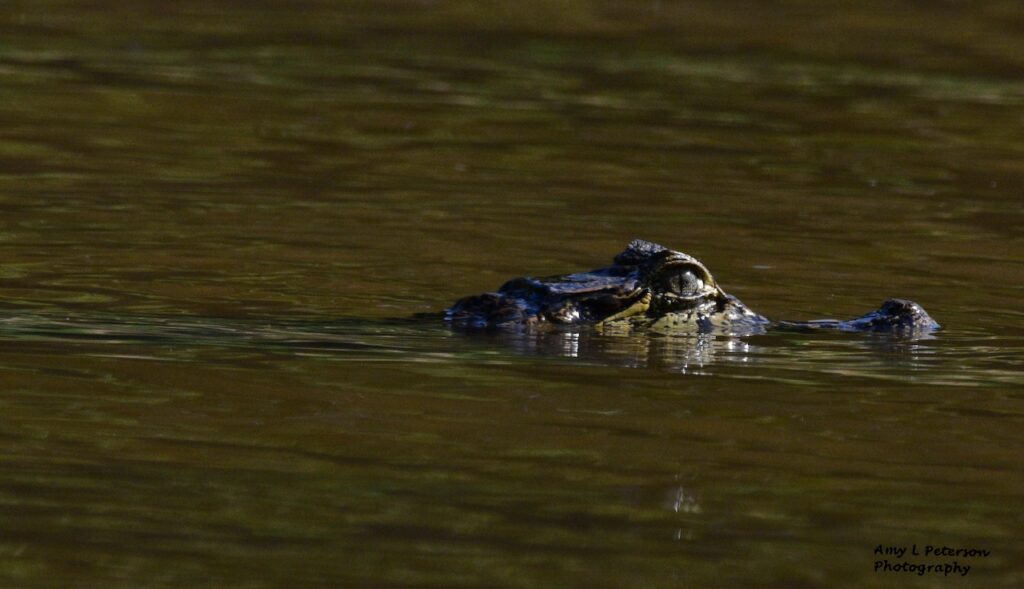
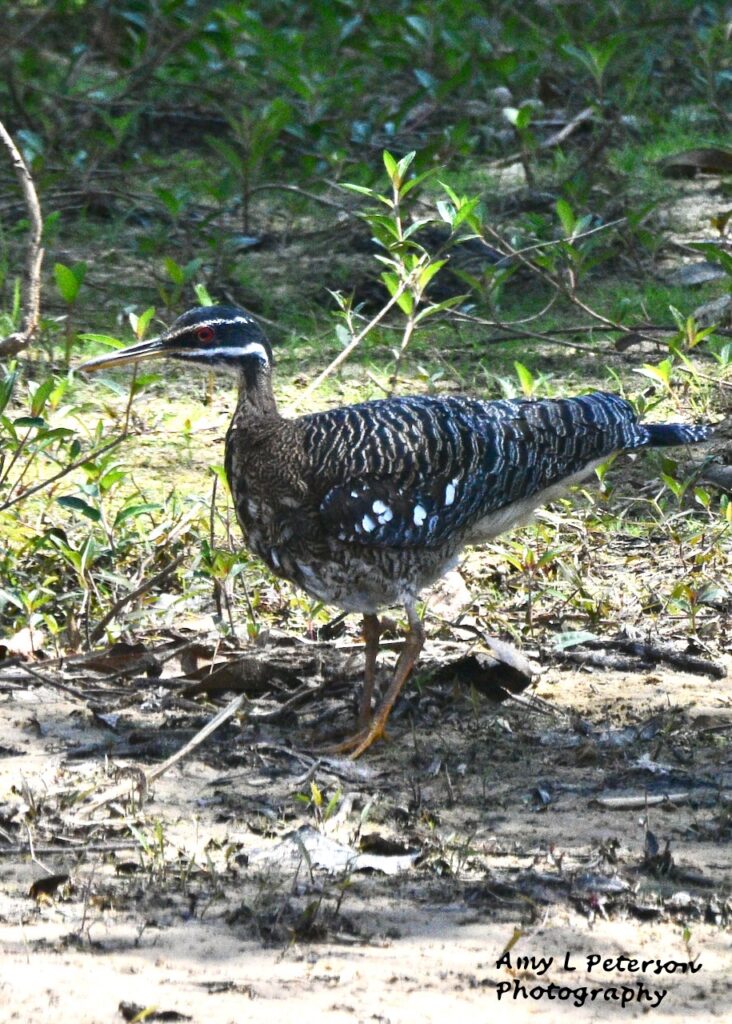
We also saw a sunbittern, which blended into its environment amazingly well. According the Smithsonian’s National Zoo and Conservation Biology Institute web site: “When threatened, the sunbittern will often let out a low hiss accompanied by a bowing movement toward the predator and/or engage in a frontal display where the bird will stretch out his wings and tail.”
This sunbittern just stood there while I took its photo.
I’ve seen two sunbitterns in my life and both were in the shade, not the sun. Not that I’m bitter-n about it.
While fishing was rather deplorable, in the afternoon I did catch this bicuda. I had caught one earlier, but this one was a bit bigger, brighter fish, and just as toothy. As Raul held this fish, I admired how well designed it was for speed and treachery. This fish had chomped on a surface bait.
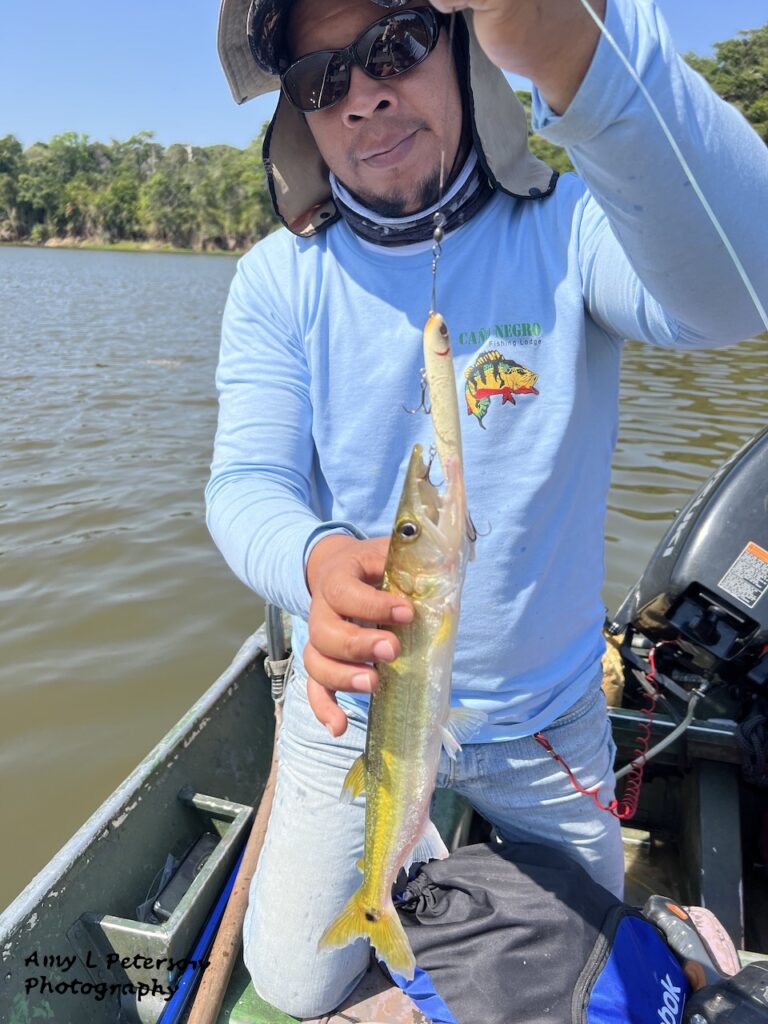
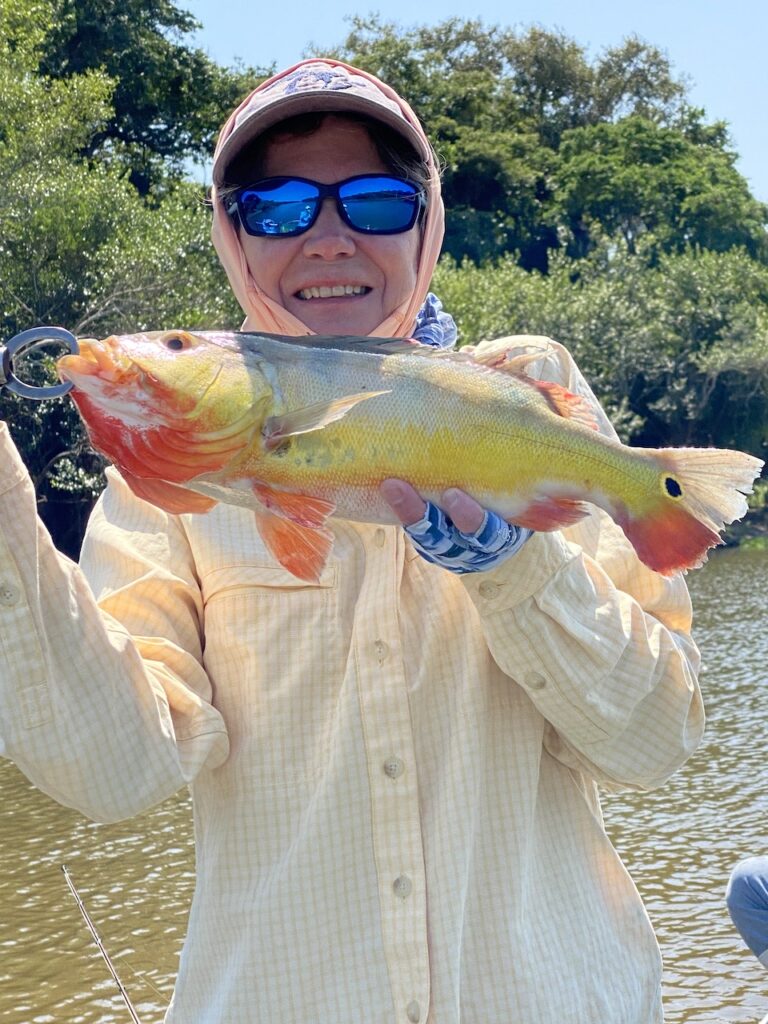

The afternoon also brought a distant glimpse of a river otter. I found humor in the fact that even the otter showed its teeth.
I also caught this beautiful peacock bass.
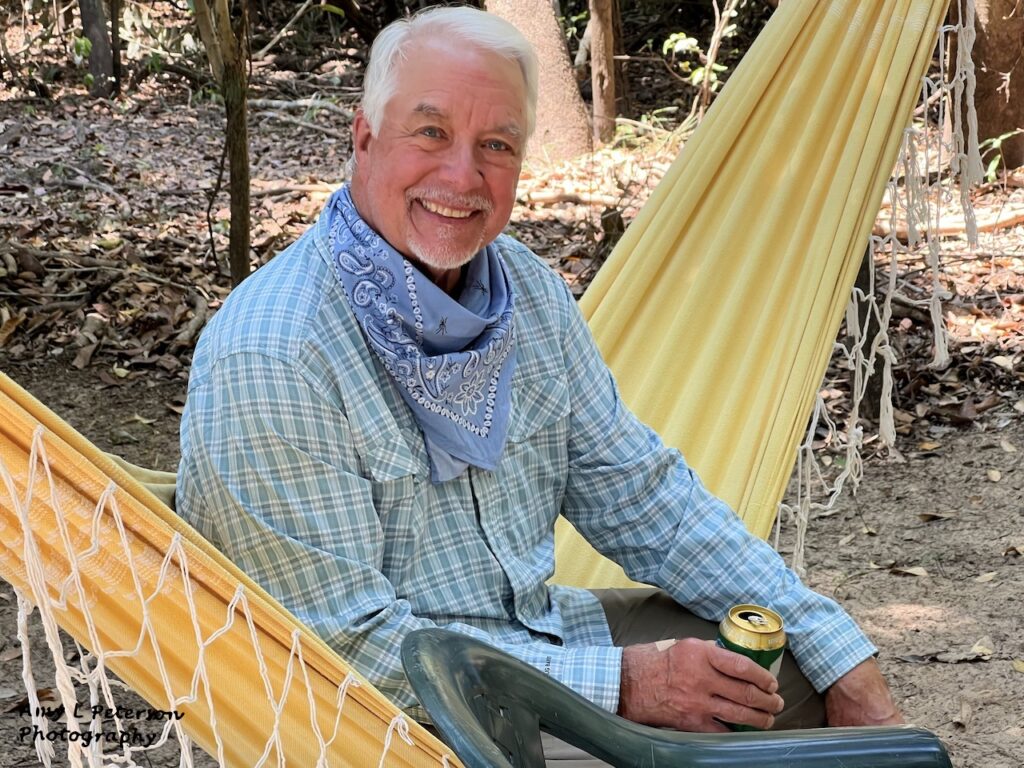
We had opted for another shore lunch at the same location as earlier in the week. The guides set up the hammocks and we were soon swinging in the shade, sipping beer, and waiting for the fish to be done cooking.
This time we had peacock bass and piranha (which is the fish on the far right in the photo). Piranha are bony fish, so we had to fork out the meat carefully. But it was tasty and went well with an icy cold beer…followed by another nap. While we napped, the guides cleaned up, and two friendly vultures hopped around on the ground eating the leftovers.

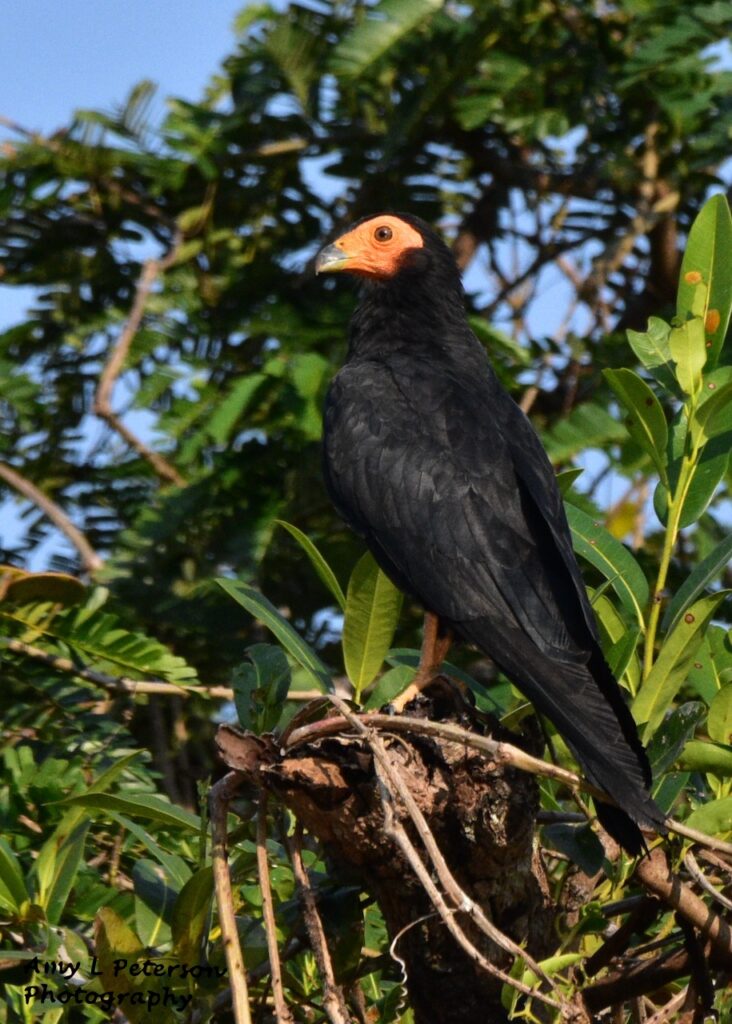
The afternoon fishing was about as bad as the morning fishing, which meant I got to pay attention to the birds, like this black caracara. According to the Peregrinefund.org, the black caracara has an interesting–meaning, some will find gross– relationship with tapirs (which have the body of a pig and in Bolivia, the color and trunk of an elephant). Black caracara apparently will sit on top of tapirs and eat ticks and other parasites. Yum! So, the thing is, even if you don’t care-a-care-a about black caracaras, tapirs definitely do.
This is another wood stork. I liked the zig-zag reflection in the water.

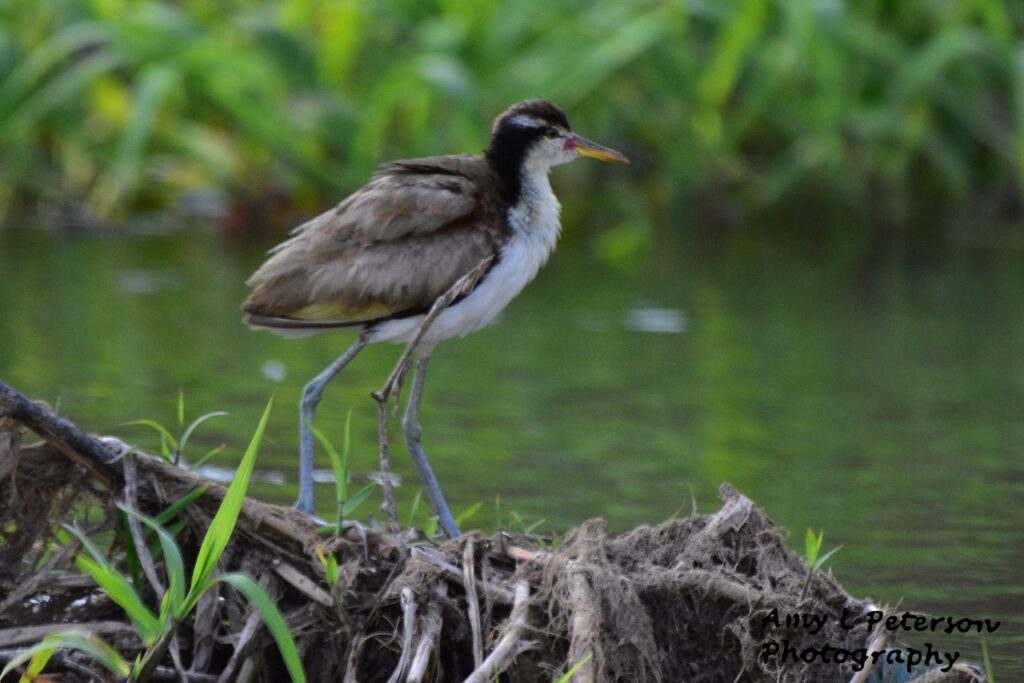
We saw this bird, which I later determined is a junvenile wattled jacana.

This is the adult wattled jacana.
This is a limpkin. This bird is also found in Florida. They primarily eat apple snails. I didn’t get a good shot on this trip, so this is one from a trip to Florida.
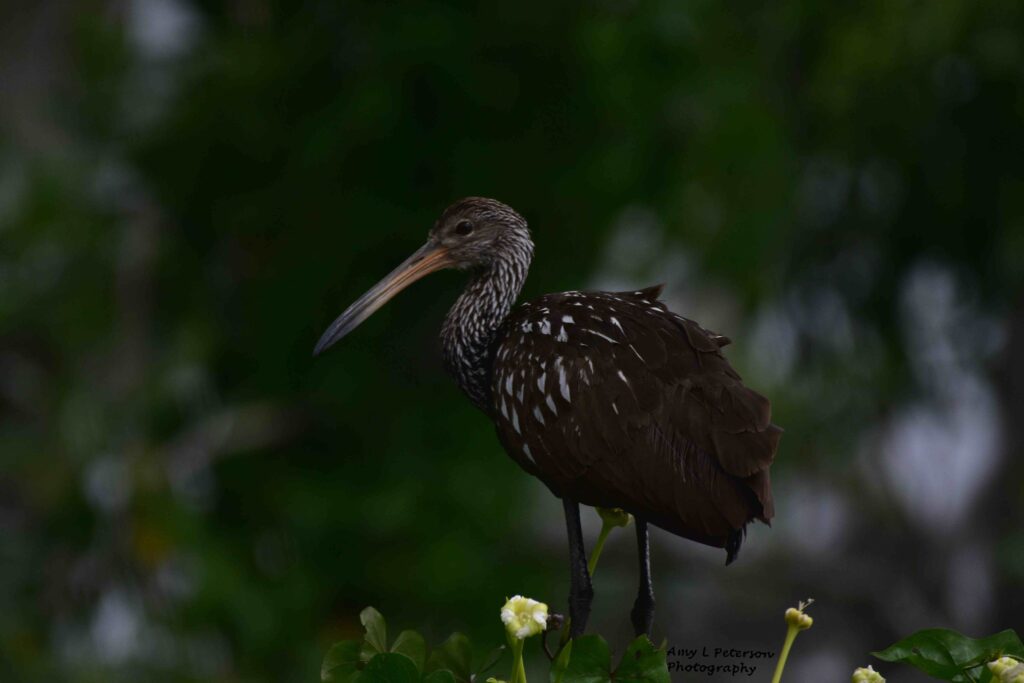

This is a cocoi heron. They are similar in size to the great blue heron found in the US but are white, gray and black. I like the random black splotches on its neck.
We also saw a blue and yellow macaw.

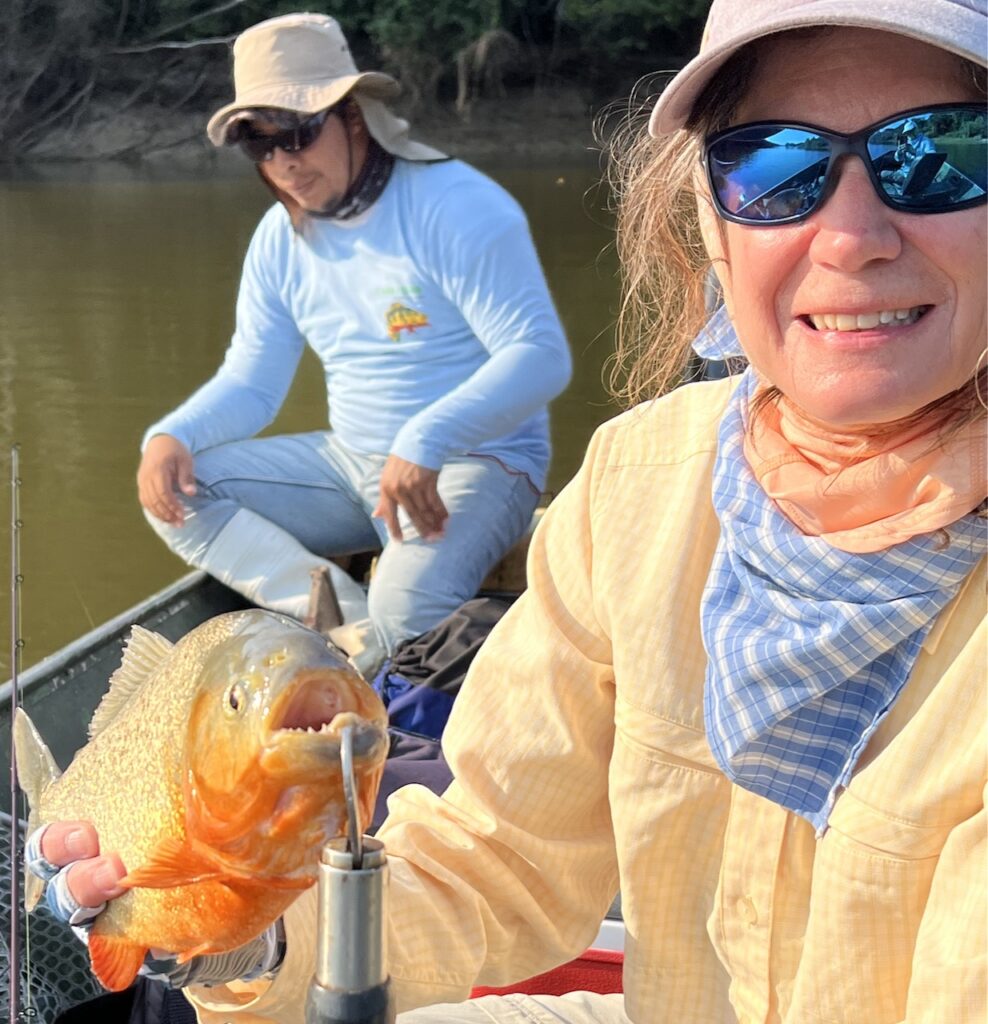
I

When I wasn’t distracted by birds, I did catch a fish or two, mostly piranhas.
Note that Raul does not appear super happy about the fishing. He had tried very hard to find good places to go after vampire fish.
This was another piranha we caught. Note the size of the lure it went after. Also, note the chunk missing from its tail.
It’s definitely a fish-eat-fish world in the Amazon.
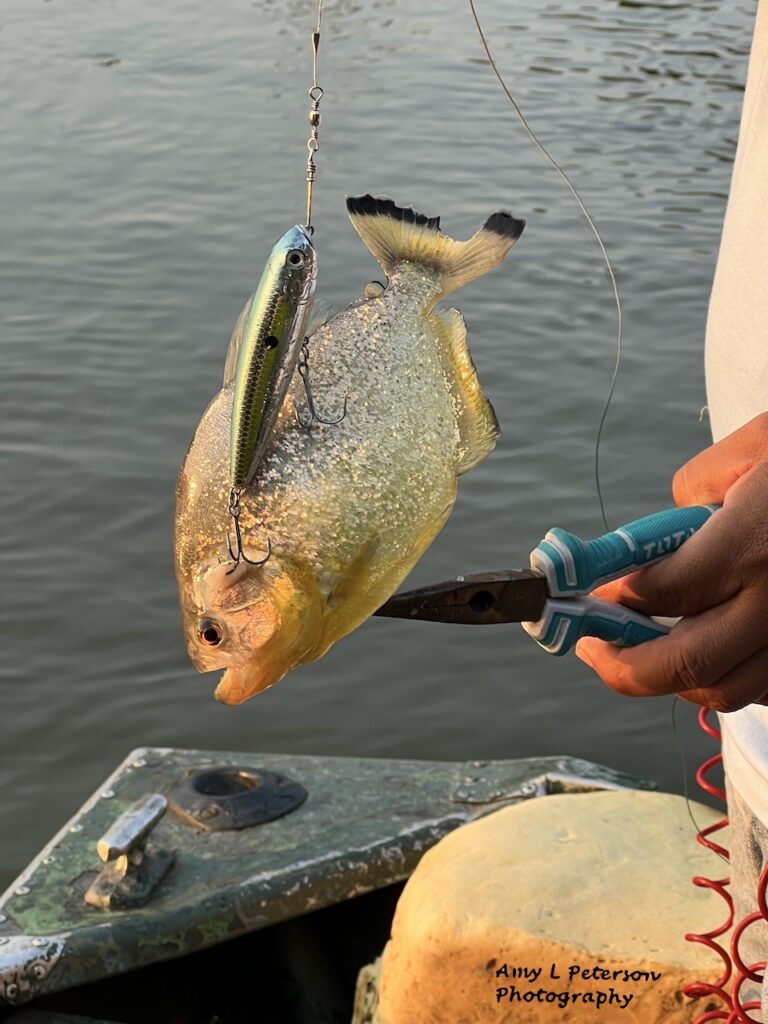
Since the fishing isn’t super good for catching fish, there’s opportunity to entice a small caiman toward the boat. This video shows a caiman chasing after my lure. This video shows it in closer…with insects on top of its head.

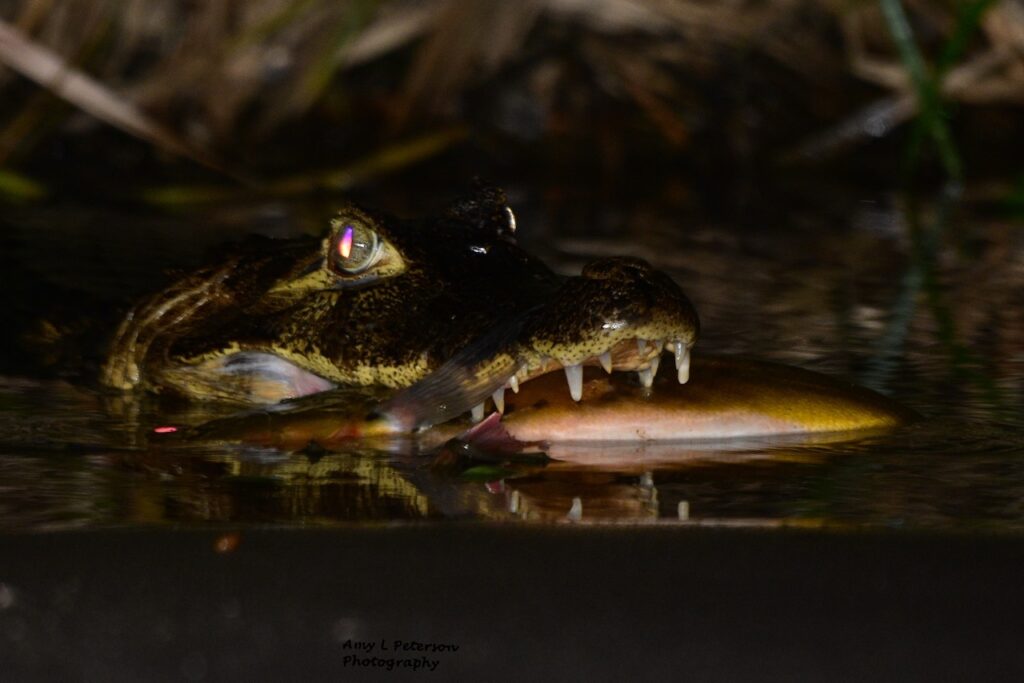
On the way back to the lodge, we slowed down at a narrow point in the river and worked our way through a six-foot wide channel. There, we saw this caiman lying in the shallows about six feet from our boat. It had a peacock bass in its mouth…that looked bigger than any peacock I had caught on the trip.
As we headed back to the lodge, zigging and zagging in the dark, I smiled about our time in Bolivia. Because even when the fishing wasn’t amazing, the birds and wildlife made up for it.